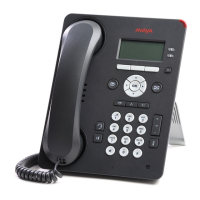• REUSE_ROUTERS will be set to the value of ROUTER
• REUSE_ROUTER_IN_USE will be set to the value of ROUTER_IN_USE
• REUSE_TAGGING will be set to the value of TAGGING
• L2QVLAN_INIT will be set to the value of VLAN_IN_USE
• The MIB object endptVLANLIST will be set to the value of VLANLIST and then the value of
VLANLIST will be set to null.
Ping and traceroute
All 9600 Series IP Deskphones respond to a ping or traceroute message sent from the call server
switch or any other network source.
For more information, see your call server administration documentation.
TCP and UDP ports
9600 Series IP Deskphones use different protocols, such as TCP, TLS, and UDP, to communicate
with other equipment in the network. Part of this communication identifies which TCP or UDP ports
each piece of equipment uses to support each protocol and each task within the protocol.
Depending on your network, you need to know what ports or ranges are used in the operation of the
deskphones.
Related Links
Received packets (destination = SIP deskphone) on page 83
Transmitted packets (source = SIP deskphone) on page 85
Received packets (destination = SIP deskphone)
Destination port
Source port Use Protocol
UDP or TCP
The number used in the
Source Port field of the
packets that the HTTP
client of the deskphone
sends
Any Packets that the HTTP
client of the deskphone
receives
TCP
Table continues…
Ping and traceroute
August 2015 Administering Avaya 9601/9608/9611G/9621G/9641G/9641GS IP Deskphones SIP 83
Comments on this document? infodev@avaya.com

